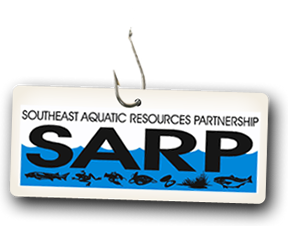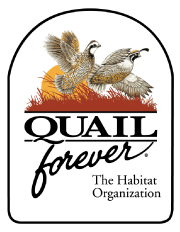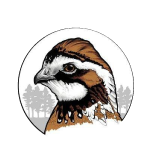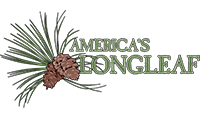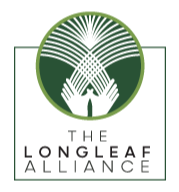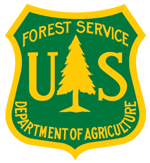Projects RSS
by
Web Editor
—
last modified
Jul 03, 2013 03:21 PM
- Designing Sustainable Landscapes, Phase 1 — by abstract — last modified Sep 22, 2020 09:18 PM
- The purpose of this project was to assess the capability of current and potential future landscapes to provide integral ecosystems and suitable habitat for a suite of representative species, and provide guidance for strategic habitat conservation. Part of the project included a comparison and evaluation of a representative (focal) species approach against a coarse filter (ecosystem-based) approach to biodiversity conservation to assess what set of complementary approaches are most effective. This was an 18-month first phase that focused on three pilot watersheds and initial model development.
- Raccoon Creek Stream Restoration for Imperiled Aquatic Species in lower Etowah River Drainage — by Admin — last modified Sep 15, 2020 01:22 PM
- This project restored stream areas of Raccoon Creek for imperiled aquatic species in lower Etowah River drainage, Georgia. This project has resulted in several new partnerships, including a collaborative planning workshop for Paulding County held by SARP and the Southeast Watershed Forum. (Photo: Map of Raccoon Creek Watershed)
- Coastal Update to the National Wetlands Inventory — by abstract — last modified Jun 15, 2020 10:21 AM
- This project completed a rapid update for wetland mapping in 162 coastal areas (1:24,000 topographic quadrangles in ME, MD, MA, NJ, NY, PA, and VA) that were last updated prior to 2000. The updates, which were incorporated into the National Wetland Inventory, have many applications in conservation analysis and coastal planning, including the Designing Sustainable Landscapes project (also funded by the North Atlantic LCC).
- Identifying Important Migratory Landbird Stopover Sites in the Northeast — by abstract — last modified Jun 15, 2020 10:00 AM
- Dozens of species of landbirds, such as warblers, hummingbirds, and orioles, migrate through the Northeastern United States from their summer breeding grounds in the U.S. and Canada to their nonbreeding grounds as far south as South America. During the migration period, birds must find habitat where they can stop, rest and replenish their energy reserves. Conservation efforts are increasingly focused on identifying stopover sites that are important for sustaining migratory landbird populations. This project built upon prior work by the University of Delaware and USGS to use weather surveillance data and field surveys to map and predict important migratory bird stopover sites.
- Marine Bird Mapping and Assessment — by abstract — last modified Jun 15, 2020 09:55 AM
- This project developed a series of maps depicting the distribution and probability of occurrence of marine birds in the northwestern Atlantic Ocean. The maps are intended to be used for informing decisions about siting offshore facilities; marine spatial planning; and other uses requiring maps of seabird distributions.
- Standardization of Terrestrial and Wetland Habitat Classification and Mapping — by abstract — last modified Jun 15, 2020 09:48 AM
- This project, sponsored by the Northeast Climate Science Center, facilitated coordination among the scientific community to assess existing habitat classification and mapping products within the Northeastern and Midwest United States.
- Extending the Northeast Terrestrial Habitat Map to Atlantic Canada — by abstract — last modified Jun 15, 2020 09:43 AM
- This project developed a comprehensive terrestrial habitat map for the entire extent of the North Atlantic Landscape Conservation Cooperative (NALCC) region by extending the Northeast Terrestrial Habitat Map to Atlantic Canada and southern Quebec. The completed version was released on September 10, 2015.
- Virginia Piedmont and Coastal Plain Updates to Northeast Habitat Map — by abstract — last modified Jun 15, 2020 09:26 AM
- This project updated the Northeast Terrestrial Habitat Map by remapping the Virginia coastal plain and piedmont. (The previous version adopted the Southeast GAP map for these regions.) This resulted in a map that is fully consistent across the 13 state Northeast region (Maine to Virginia and West Virginia).
- Decision Support Tool to Assess Aquatic Habitats and Threats in North Atlantic Watersheds and Estuaries — by abstract — last modified Jun 15, 2020 09:06 AM
- Through a stakeholder-driven process, the project team developed a multi-criteria decision support tool to allow resource managers to visualize and manipulate information on aquatic habitats and threats to prioritize areas for conservation action.
- North Atlantic LCC Demonstration Project: Marsh Migration — by abstract — last modified Jun 12, 2020 03:41 PM
- Coastal marshes serve a variety of important functions including flood control, spawning/rearing areas for marine life, and critical habitat for many bird species of conservation concern. The focus of this project was to facilitate local actions in Maine to accommodate the needs of coastal marshes to migrate landward in response to rising sea levels.
- Application of the Coastal and Marine Ecological Classification Standards (CMECS) to the Northeast — by abstract — last modified Jun 12, 2020 11:59 AM
- This project integrated NOAA and NatureServe's Coastal and Marine Ecological Classification Standard (CMECS) and the Nature Conservancy and NatureServe's Northeast Regional Habitat Classification System (NRHCS) in order to extend the latter system to estuarine and marine environments from Maine to Virginia. State, academic, and non-profit partners collaborated to identify and cross-walk existing state marine classification systems. The project examined the scalability of this classification by conducting pilot mapping projects at three different scales relevant to planning and conservation efforts.
- Extending the Northeast Aquatic Habitat Map to Canada — by abstract — last modified Jun 12, 2020 11:32 AM
- This project contributed to the development of a comprehensive aquatic habitat map for the entire extent of the North Atlantic Landscape Conservation Cooperative (NALCC) region by extending the Northeast Aquatic Habitat Map to Canada and southern Quebec.
- Restoring Aquatic Connectivity and Increasing Flood Resilience — by abstract — last modified Jun 12, 2020 11:17 AM
- This project brings together the major partners involved in road-stream crossings to assess river and stream continuity and set priorities for restoring connectivity, and reducing flood damage to road crossings, within the North Atlantic region.
- Revisions to the Northeastern Aquatic Habitat Classification — by abstract — last modified Jun 12, 2020 11:12 AM
- This project updated the 2008 Northeastern Aquatic Habitat Classification (NAHCS) prepared by The Nature Conservancy and the Northeast Association of Fish and Wildlife Agencies (NEAFWA). The updates added a tidal component to the classification of streams and rivers and a mapped classification of lakes; the lake classification was revised in 2015.
- Vulnerabilities to Climate Change of Northeast Fish and Wildlife Habitats, Phase II — by abstract — last modified Jun 12, 2020 11:02 AM
- This project completed three assessments of the vulnerability of terrestrial, aquatic, and coastal habitats (ecosystems) to climate change, including sea level rise. One assessment evaluated 13 terrestrial and wetland habitat types, the second evaluated cold water stream habitats, and the third evaluated coastal habitats. A database of coastal climate change projects and tools was also developed.
- Removal of Two Dams in the Wetmore Run Watershed, Potter County, PA — by Admin — last modified Jul 24, 2019 03:35 PM
- This project will remove the only two dams in the Wetmore Run Watershed in Potter County, Pennsylvania opening 8.5 miles of habitat for brook trout. Removal of the dams will also eliminate thermal pollution and restore lotic ecosystem function. (Photo: Looking upstream at the dam on Wetmore Run. No water is going over the spillway.)
- AppLCC Partnership Dashboard — by Web Editor — last modified May 24, 2018 12:38 AM
- A user-friendly 'dashboard' of the major results of the Partner Interviews study conducted by Dr. Brown as part of the Research Fellowship with Dr. Tim Murtha of PSU/UFl
- Executive Summary - Present and Future Possibilities of Landscape Scale Conservation — by Jean Brennan — last modified May 22, 2018 02:32 PM
- The Landscape Conservation Cooperative (LCC) program was created under a secretarial order to develop regional conservation partnerships – under the Department of the Interior – that aimed to coordinate regional conservation planning in response to climate change impacts. Because they were partner-driven efforts, each of the 22 LCCs followed a distinct trajectory and implemented diverse projects, meaning that there is value in exploring how specific LCCs, such as the AppLCC, approached regional conservation. This study assesses the successes, limitations, and impacts of the AppLCC, with the aim of providing insights for future regional conservation partnership.
- The Present and Future Possibilities of Landscape Scale Conservation: AppLCC Ethnographic Study Video of Presentation — by Web Editor — last modified May 22, 2018 02:23 PM
- The Landscape Conservation Cooperative (LCC) program was created under a secretarial order to develop regional conservation partnerships – under the Department of the Interior – that aimed to coordinate regional conservation planning in response to climate change impacts. Because they were partner-driven efforts, each of the 22 LCCs followed a distinct trajectory and implemented diverse projects, meaning that there is value in exploring how specific LCCs, such as the AppLCC, approached regional conservation. This study assesses the successes, limitations, and impacts of the AppLCC, with the aim of providing insights for future regional conservation partnership.
- Landscape Conservation Fellowship — by Web Editor — last modified Apr 26, 2018 09:19 PM
- The Fellowship offers a unique opportunity for new-entry professionals to be part of the emerging and exciting field of Landscape Conservation. This is a post-graduate level training opportunity with career interests in applied landscape conservation science and resource management.





